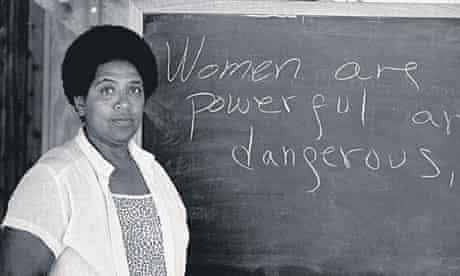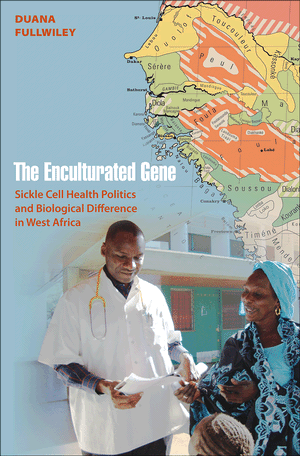Alliant International University, San Diego
2010
480 pages
Publication Number: AAT 3428767
ISBN: 9781124269009
Jon E. Kingsbury
A Dissertation Presented to the Graduate Faculty of the Hufstedler School of Education Alliant International University In Partial Fulfillment of the Requirements for the Degree of Doctor of Education
The purpose of this qualitative inquiry was to develop a critical ethnographic methodology to examine the experiences that led a select group of elementary teachers to self-identify as biracial. Additionally, through the use of critical systems analysis, this inquiry explored the perspectives of the informants with regard to racism at the classroom and the greater school or district levels. In order to collect data, in-depth phenomenological interviews were conducted with two self-identified biracial elementary teachers from the southern California area. These interviews were tape recorded and transcribed verbatim. This inquiry sought to create an interview structure that would ensure a critical ethnographic approach to data generation that resulted in the development of the Figure Eight Interview Model, wherein the research process is dominated by two distinct research settings. The first is where the researcher and the informant are working collaboratively during the actual interviews. The second setting is where the researcher and the informant are working independently, using grounded theory to critically analyze the data transcribed from the previous interview. The analyses were then discussed at the next interview, where thematic categories were developed. These two settings were repeated three times, with each interview building on the previous and becoming more focused. Using system and social integration levels of critical systems analysis, themes were uncovered in order to develop theory for addressing, reducing, and ultimately preventing racism in classrooms and schools. These themes, along with the Figure Eight Interview Model, can be refined and expanded through further research done by professional development planners, multicultural educators, and qualitative researchers.
Table of Contents
- LIST OF FIGURES
- 1 . INTRODUCTION
- Purpose of the Study
- Significance of the Study
- Assumptions of the Study
- Delimitations of the Study
- My View of Humanity and Racism
- 2. REVIEW OF THE LITERATURE
- Racial Identity Development
- Introduction
- Monoracial Identity Models
- Biracial Identity Models
- Racial Identity Development and Teachers
- Comments on Review of Racial Identity Models
- Teachers’ Biographies
- Perspectives on Teachers’ Biographies
- Development of Teachers’ Biographies
- Purpose and Value of Teachers’ Biographies
- Multicultural Education
- History and Development of Multicultural Education
- Definitions and Goals
- Teachers’ Role in Multicultural Education
- Conclusions From the Review of the Literature
- Research Questions in Light of the Literature Review
- Racial Identity Development
- 3. RESEARCH METHODOLOGY
- Research Paradigms
- Critical Ethnography
- Sociohistorical Development
- Conceptual and Philosophical Framework
- Feminist Methodology
- Critical Theory
- Research Design of the Study
- In-Depth Phenomenological Interviewing
- Sampling Strategy
- Selection of Informants
- Content and Conduct of the Interviews
- Data Analysis
- Carspecken’s Stages for Critical Research
- Data Generation and Data Management
- My Role as Researcher
- Trustworthiness
- 4. ASSESSING THE RESEARCH METHODOLOGY
- Procedural Aspects of the Study
- Number of Informants
- Commitment of Time
- Use of Instruments
- Components of the Data Analysis
- Summary of Procedural Aspects
- Theoretical Concerns Within Critical Ethnography
- Empowerment
- Contextualization of Data
- Romanticism
- Validity/Trustworthiness
- Summary of Theoretical Concerns
- Criteria Within the Figure Eight Interview Model
- The First Interview
- The Second Interview
- The Third Interview
- Summary
- Procedural Aspects of the Study
- 5. MY ANALYSIS AND RESPONSES TO THE STUDY
- The Research Questions
- Research Question 1
- Research Question 2
- Research Question 3
- Research Question 4
- Research Question 5
- My Summary of Our Study
- Assessment of the Methodology
- The Research Questions
- 6. INFORMANTS’ RESPONSES TO OUR STUDY
- Opening Comments/General Discussion
- Time and Reflection Process I
- Number of Participants
- Length of Interviews
- API Scores
- Time and Reflection Process II
- Role of Family
- Self-identification Statements
- Sociohistorical Context
- Theoretical Elements
- Empowerment of Informants
- Time and Reflection Process III
- Asian Pacific Islanders Educators Association
- Their Mothers’ Influence
- Weddings and Extended Families
- Their Mothers as “Victims”
- My Error in Identifying a Relationship
- Regional Cultural Differences
- Changes in Biracial Demographics
- Their Physical Ambiguity
- The Use of the Word “Threat”
- School and Community Cultures
- “Addressing” Versus “Reducing and Preventing”
- Institutional Racism
- San Diego’s Blueprint for Success
- Changes in the American Culture
- Truthfulness in My Re-Presentation
- Stages of Biracial Identity Development
- Closing Comments
- Analysis of Informants’ Responses
- Research Process
- Critical REID Factors
- Their Mothers’ Influence
- Empowerment
- Institutional Racism
- Sociohistorical Contextualization
- Hierarchy of Racism
- Summary
- 7. SUMMARY CHAPTER
- Research Findings
- Research Questions
- Possible Shortcomings
- Focus of Study
- Peer Debriefers
- Figure Eight Interview Model
- Theoretical Foundations
- Figure Eight Interview Model’s Effectiveness
- Summary: Figure Eight Interview Model
- Critical Ethnography
- Empowerment
- Data Contextualization
- Catalytic Validity
- Validity/Trustworthiness
- Summary
- Ethical Implications of an Organic Inquiry
- Developmental Biracial REID Model
- Implications and Applications for Practice
- Professional Educators
- Qualitative Researchers
- Personal Reflections
- REFERENCES CITED
- APPENDICES
- A. SELF-IDENTIFICATION OF RACIAL IDENTITY STATEMENT
- B. FAMILY HERITAGE WORKSHEET (FIGURE B1)
- C. WRITTEN CONSENT FORM
- D. SUGGESTIONS FOR REFLECTIVE JOURNAL WRITING
- E. PERSONAL HISTORY OF IDENTITY WORKSHEET (FIGURE E1)
- F. SUGGESTIONS FOR ANALYSIS OF TRANSCRIPTS
- G. SUGGESTIONS FOR COMMENTS ON INTERVIEWER’S ANALYSIS
- H. CALL FOR PARTICIPANTS HANDOUT
- I. POEM: “I AM INVISIBLE”
- J. INFORMANTS’ REFERENCE SHEET
List of Figures
- Racial/ethnic identity development models
- Moments of ethnography
- Conceptual Figure Eight Interview Model
- Procedural Figure Eight Interview Model
- List of established interview questions
- Five stages for critical qualitative research
- Interpretation of Carspecken’s (1996) research design
- Summary of responses to research questions
- Biracial identity development continuum
Purchase the dissertation here.


